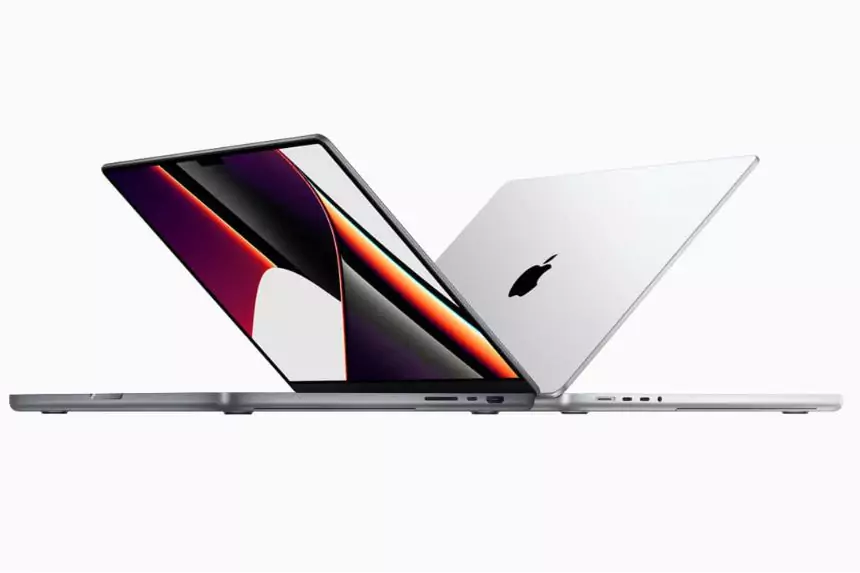For many years, Apple’s MacBook line very well has set the standard for laptop design. It is renowned for its svelte looks, strong performance, and amazing user experience. MacBook updates regularly involve more than little adjustments; they regularly involve a reconsideration of how laptops might way better meet modern demands. The MacBook stands out because of Apple’s capacity to incorporate state-of-the-art hardware and program updates, making it perfect for professionals, students, and everyday users who require top-notch performance.
The MacBook series, which is generally composed of the MacBook Air and MacBook Pro, meets a variety of client needs, extending from high-performance occupations like software development and video editing to leisurely web browsing and media utilization. With MacBook updates, Apple incorporates new highlights that improve speed, security, and user convenience in line with the rapid advancement of innovation.
Key Hardware MacBook Updates History

Apple has taken a daring and creative stance when it comes to hardware improvements. Significant enhancements have very well improved MacBooks’ processing power, display quality, connection, and battery life.
1. The Shift to Apple Silicon (M1 and M2 Chips)
One of the most significant turning points in the MacBook’s history will without a doubt be the move from Intel CPUs to Apple’s proprietary M1 chip in late 2020. Clients may now multitask easily, have more handling power, and have longer battery life much appreciated by these MacBook updates. It also revolutionized performance and energy efficiency.
Apple customized ARM technology for use in its devices, which forms the foundation of the M1 chip’s architecture. Along with introducing the Neural Engine for machine learning tasks, this new design enhanced CPU and GPU performance. Greater compatibility between macOS and the MacBook’s hardware was made possible by Apple’s complete control over both the hardware and software experience thanks to the M1 chip.
Building on the success of the M1 chip, Apple released the M2 chip in 2022 very well with even more prominent performance: 18% stronger CPU, 35% faster GPU, and 40% more Neural Engine operations. Both computer aficionados and creative professionals found the MacBook Air and Pro to be even more capable and proficient after these changes.
2. Retina Display and True Tone Technology
Apple very well raised the standard for laptop screen quality when it revealed the Retina Display with the 2012 MacBook Pro. More pixel density on this panel pretty well-implied crisper lettering, sharper graphics, and more striking colors. Also, the retina displays reduced eye strain, especially for individuals who spend a lot of time in front of screens.
Ensuing MacBook updates improved this experience with the addition of True Tone technology, which naturally balanced the screen’s white balance based on the surrounding light. This feature made watching more natural, especially when switching between different illumination environments, such as when working outside and indoors.
3. Magic Keyboard
Outstanding changes have been made to the MacBook keyboard, especially in response to client input. The 2015 release of Apple’s Butterfly keyboard included a smooth and inventive plan, but it soon gained a reputation for issues including broken keys and inadequate tactile feedback. 2019 saw Apple return to the original Magic Keyboard design, which has scissor-switch keys for increased writing pleasure and more prominent dependability in response to consumer concerns.
For people like authors, programmers, and students who depend on their MacBooks for intensive typing jobs, these MacBook updates were essential. The Magic Keyboard is an exceptional feature of the latest MacBooks, thanks to its haptic feedback, decreased noise level, and enhanced longevity.
4. Touch Bar and Touch ID
The Touch Bar, a thin OLED touchscreen that pretty much took the place of the function keys in the MacBook Pro, was very well launched by Apple in 2016. With its dynamic control strip that changes depending on the application being utilized, the Touch Bar gives simple access to sliders, easy routes, and other controls. Users’ opinions on the Touch Bar, in spite of its innovation, were divided; a few lauded its versatility, whereas others lamented the absence of real function keys.
Alternately, Touch ID, which debuted with the Touch Bar, has proven to be a well valued feature. Users may safely unlock their MacBooks with this fingerprint sensor and use Apple Pay to make purchases. Touch ID has greatly improved ease and security while decreasing the need for passwords.
5. USB-C and Thunderbolt Ports
In terms of network, the move of MacBooks to USB-C and Thunderbolt ports has very well been revolutionary. Speedier information transfer rates, greater gadget compatibility (from external monitors to storage drives), and the alternative to charge the MacBook through the same connection utilized for information transfer are all given by these ports.
But this change also removed additional connectors, like the SD card slot, HDMI, and USB-A, which at first annoyed users who needed those inputs. The whole tech community has gradually come to accept USB-C, and users are increasingly appreciative of the increased speed and versatility offered by Thunderbolt 3 and 4 connections.
6. Enhanced Battery Life
For laptop consumers, battery life may be a noteworthy concern, and Apple has made reliable advancements in this area. Depending on the demonstration and utilization, MacBooks as of now can last up to 20 hours on a single charge much obliged to equipment optimizations and Apple Silicon’s energy efficiency. Because of this significant advancement over previous iterations, MacBooks are now the perfect choice for professionals who must work continuously on the road.
Software Updates: MacBook Updates and Beyond

Apple has made significant improvements to its macOS software in addition to equipment overhauls to improve performance and user experience.
1. macOS Big Sur and Monterey: A New Era
Apple brought a more modern design language to macOS Big Sur, a visually updated operating system that very well spanned the gap between iOS and macOS. This release happened in 2020. Icons grew more in line with iOS’s style, and the Control Center familiar to iPhone users was pretty much brought over to the Mac to provide simple access to settings.
Additional innovations were included in the 2021 macOS Monterey MacBook updates, such as Universal Control, which empowers users to easily operate numerous Apple devices (such as an iPad and MacBook) with a single mouse and keyboard. Users will find it less demanding to switch between their MacBook and other Apple items much obliged to this innovation, which very well improved the consistency between Apple’s gadgets.
2. Continuity and Handoff
The Continuity and Handoff features have been essential to the smooth integration that is well-known in the Apple ecosystem. Users can begin working on a task on one Apple gadget and finish it on another much obliged to these highlights. For example, you’ll begin writing an e-mail on your iPhone and wrap up it on your MacBook, or you may copy and paste material between gadgets.
Clients may take calls on their MacBook or respond to texts without exchanging gadgets much appreciated for continuity, which also applies to phone calls and texts. The MacBook is a vital component of the Apple ecosystem, increasing productivity and optimizing workflows thanks to its hardware-software interaction.
3. Privacy and Security Features
Recent macOS versions continue Apple’s tradition of emphasizing security and privacy in software updates. Mail Privacy Protection, which was very well introduced with macOS Monterey, stops e-mail senders from tracking your IP address or knowing when you open their emails. The MacBook updates support Apple’s overarching objective of safeguarding client privacy.
Gatekeeper is another vital security highlight that watches against malware by requiring apps to be signed and verified before installation. Disk encryption is another feature that FileVault provides, protecting your information even in the event that your MacBook is stolen or misplaced.
4. Improved Multitasking with Mission Control and Spaces
Apple has very well been increasing the effectiveness of multitasking on macOS for a long time, with devices like Spaces and Mission Control. Clients may effectively browse between apps utilizing Mission Control’s bird’s-eye view of all open windows and organize their workflows more viably by making various virtual desktops with Spaces.
Multitasking was made even more user-friendly with the introduction of Stage Manager in macOS Ventura (2023). This highlight helps clients to effortlessly move between open apps and windows without clogging the screen. With these advancements, MacBooks are becoming increasingly suitable for applications that require a lot of multitasking, such as software development or professional video editing.
Conclusion
The performance, design, and client experience of laptops have all been ceaselessly improved by Apple’s MacBook updates, which very well include the breakthrough M1 and M2 CPUs, flawless Retina displays, and integrated macOS capabilities. Exciting new features including improved custom silicon, augmented reality capabilities, and increased environmental sustainability are promised in upcoming MacBook updates. Future MacBooks will be strong and sustainable because of Apple’s emphasis on fusing cutting-edge technology with environmentally friendly processes. This promises to increase productivity and creativity for all users and uphold the company’s reputation as the world’s most iconic notebook.
For more information on MacBook updates, visit ProxyGeeko!


